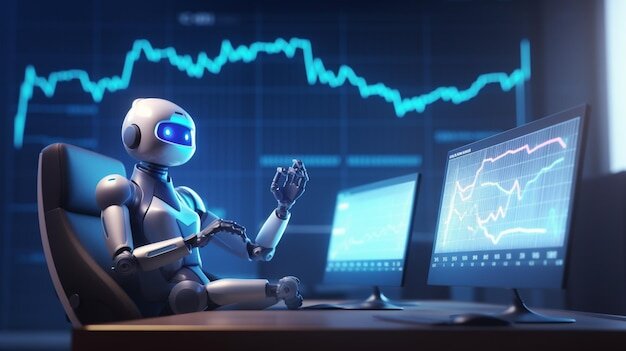Injecting the poison of AI into Wall Street

TEHRAN- The public enthusiasm surrounding artificial intelligence (AI) has pushed the U.S. stock market to unprecedented highs—a trend accompanied by historic valuations and concerns of a looming bubble. This excitement, combined with serious warnings from top global financial executives about geopolitical and macroeconomic risks, suggests a six-month to two-year window for a significant correction in the U.S. stock market.
The risk of a market downturn is fueled not only by domestic speculation but also by global instability. Examining the interplay of two opposing forces—technological excitement and macroeconomic risks—can play a crucial role in analyzing the future of U.S. capital markets. The problem is evident. The recent explosive growth of the stock market, especially in tech-focused indices like the Nasdaq, is largely driven by optimism around generative AI. This technology, which offers capabilities far beyond simple automation, has ushered the market into a new phase of economic development. The public launch of AI software has seemingly revealed enormous commercial potential for boosting productivity across various industries. This has led to the influx of hundreds of billions of dollars into companies providing the necessary infrastructure for this revolution.
Companies like NVIDIA, due to their unique position in producing graphics processing units (GPUs) essential for training and running complex AI models, have become central to the market. Demand for these chips has surged beyond the ability of supply chains to respond quickly.
Supercomputers and cloud infrastructure are no exception. Tech giants such as Microsoft, Amazon AWS, and Google Cloud have invested trillions of dollars in building large-scale data centers, providing the platforms required to run AI applications. Fundamentally, this segment of the market relies on measurable innovations and tangible product performance improvements. Yet, this growth carries its own inherent risks. Many AI-related companies trade at extremely high price-to-earnings ratios, indicating that the market has already priced in extraordinary growth expectations. If future growth fails to meet these expectations, a correction is inevitable—potentially severe enough to be considered a market crash. The rise of startups valued at billions of dollars based solely on promises of an AI-driven future, without significant revenue, recalls the irrational exuberance of the dot-com bubble. It is no coincidence that numerous U.S. market analysts, including senior strategists at J.P. Morgan, have warned about AI’s potential to trigger a stock market downturn due to unmet shareholder expectations.
The International Monetary Fund (IMF) and other regulatory bodies have also repeatedly expressed concern about extreme valuations in the tech sector and the need to “cool” asset markets. Today’s market functions like a dual system: one part grounded in AI-driven growth, and another speculative segment fueled by expectations and liquidity injections.
Mahdi Zolfaghari, PhD, Associate Professor, Department of Asian Studies, Allameh Tabataba’i University
Leave a Comment